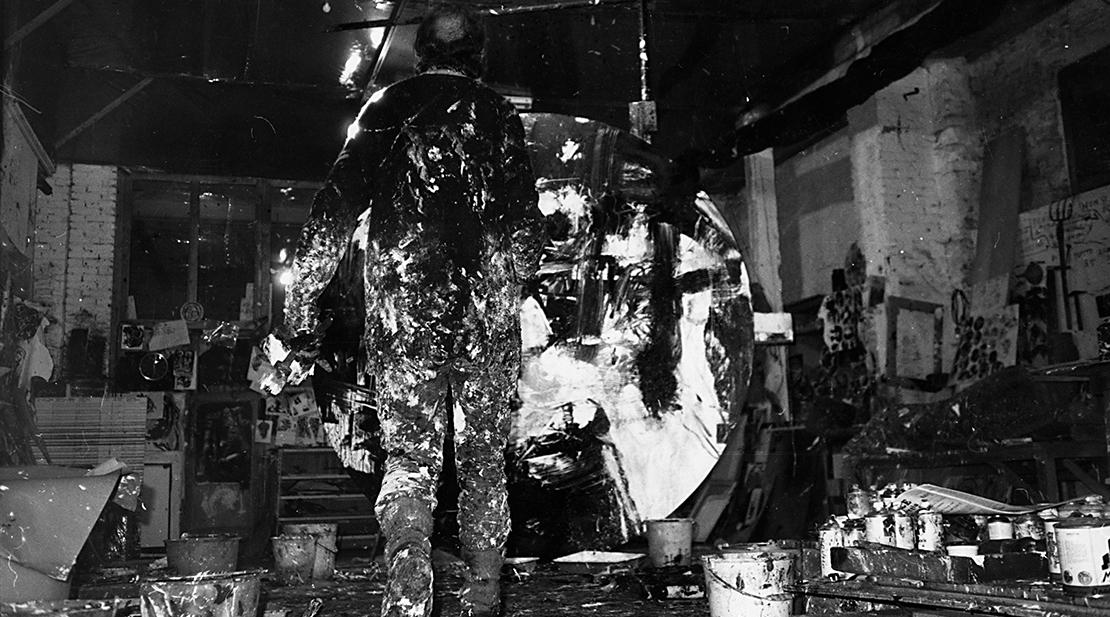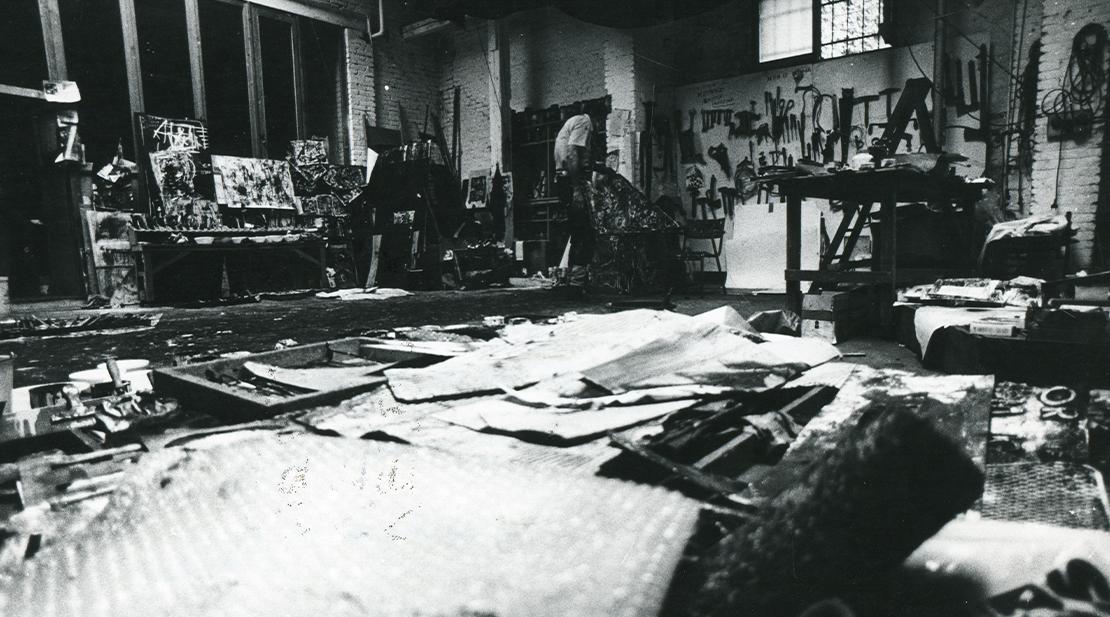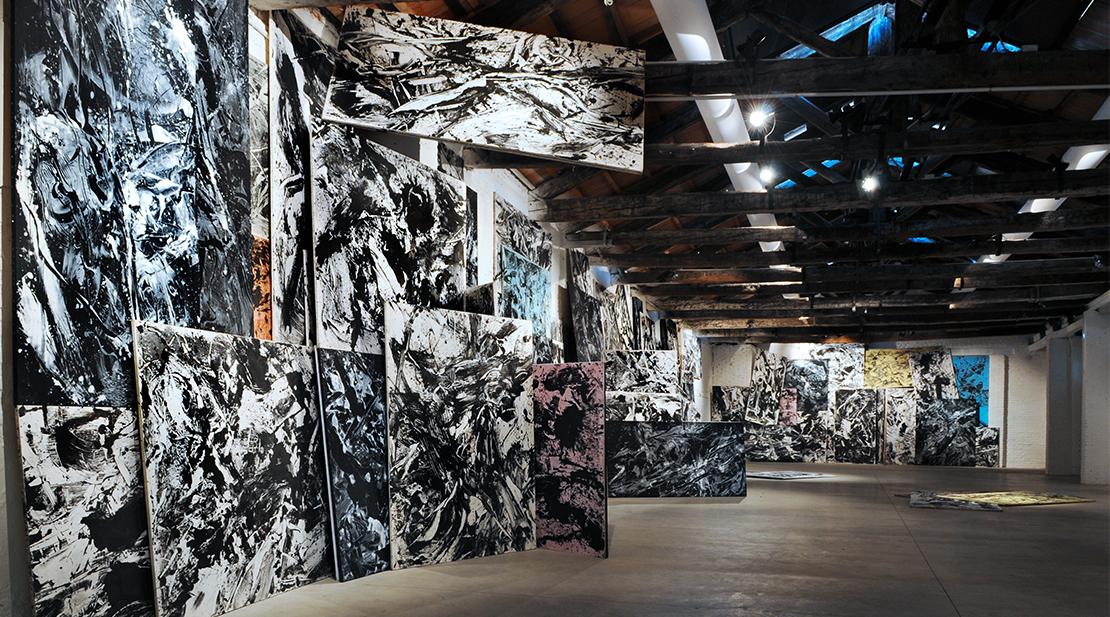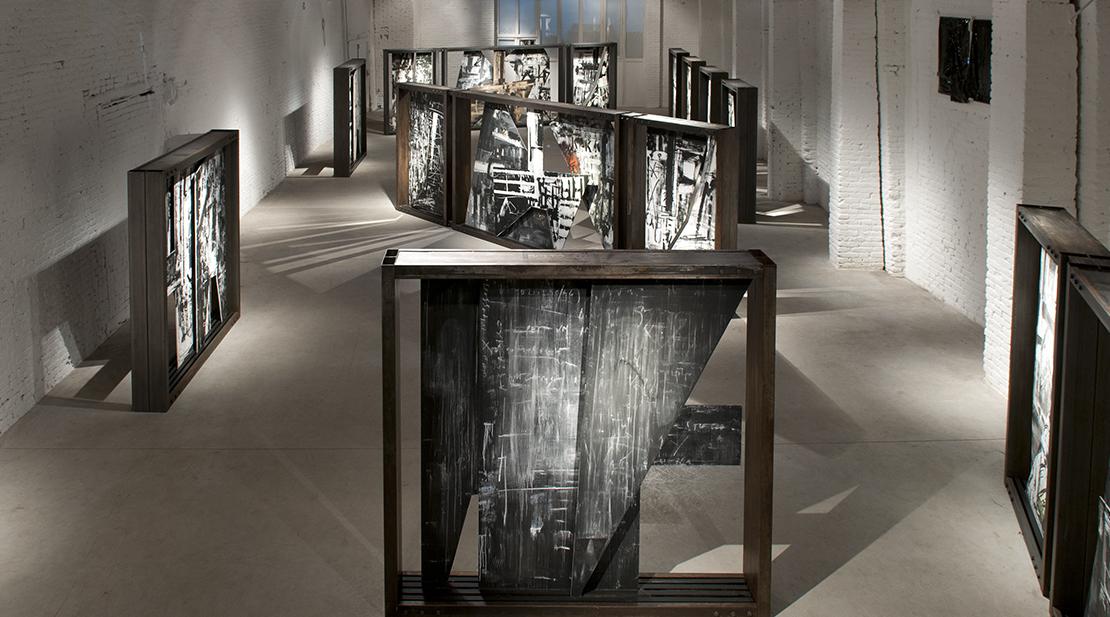MOSTRA IN CORSO
EDUARD ANGELI. SILENTIUM
13 April - 24 November 2024
Spazio Vedova
Vedova’ Space at Dorsoduro 50, right next to his beloved Zattere by the Salute, was the last large studio Emilio worked in, from the mid-1970s onwards.
After his studio in the church of San Gregorio, and that of the Magazzini del Sale, which he left after saving them from demolition, he moved to a former 16th-century squero or boatyard with crooked and wavy walls lit by large, bright skylights, comprising a long, slightly curved space punctuated by tall, dense trusses which in some way assist and hold together all that wholly Venetian sense of precarious mobility that is so present in many works by Vedova.
This site was the last major element to join all the others: home, studios and stores, in direct communication with each other and in which the very meaning of life was, for him, closely tied to his artistic research. These Vedova spaces in continuum rendered extraordinarily dynamic and alive by his daily passage formed, as though a large laboratory space with view of the world, an incredible and challenging itinerary of possible relationships between idea and work, between art and life, utopia and reality.
Emilio Vedova was particularly proud of his big antro, as he called it, beneath which he lived every day intensely, and renewed his own adventure in the experience of art, finding in this extraordinary and intensely Venetian space, a place in which to expand and concentrate that was congenial to him.
This place has seen the emergence of several significant series of works starting with that of the Plurimi Binari, the large "teleri" of the 1980s, the Dischi, the Tondi, the Oltre, Carnevali, Continuum and models Per Uno Spazio.
The Fondazione refurbished and restored the former studio of Vedova, with the aim of maintaining the artist’s spirit intact in the site. The project is by Atelier Traldi, with coordination and project management by Maurizio Milan, and with the supervision of Renzo Piano. The project’s aim is to create a place with the most modern technology to conform with the standards required for museum conservation. The space is divided into an archive area that will allow the study, preservation and restoration of some of the works by Emilio Vedova owned by the Fondazione, and a central, highly flexible area for exhibitions, conferences, concerts, and any other cultural projects of the Fondazione.



